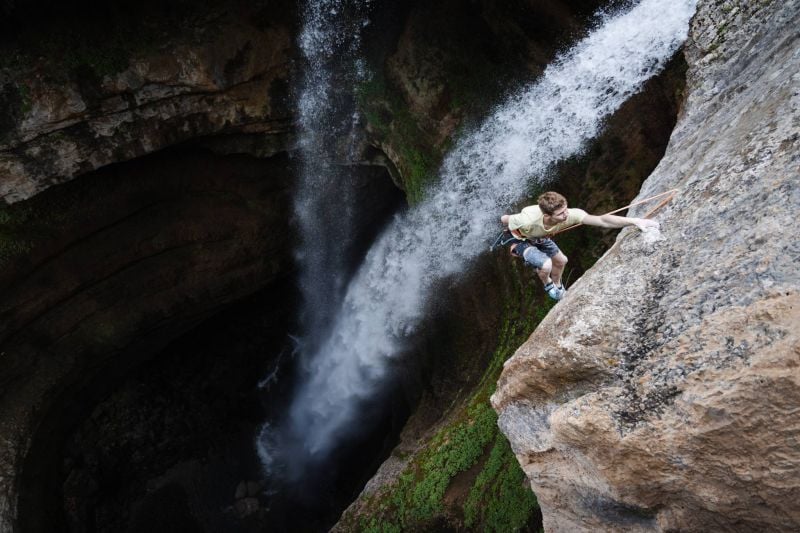
Avaatara is the Arab world’s only 9a climb. Ranked even beyond “elite,” only a small number of people in the world can climb at this level. (Credit: Lea El Medawar)
CHATINE, Lebanon — Home to Lebanon’s most challenging rock climbing route, Baatara Gorge — known to most Lebanese as Balou3 Bal3a, or بالوع بلعا — feels like another world.
A river pours through the top of the gorge, cascading past three natural bridges of Jurassic limestone. Dewy moss covers the rock as mist from the waterfall tosses out segments of fragmented sunlight.
Some liken the landscape to a scene from James Cameron’s 2009 film Avatar, thus the name of the route: Avaatara.
“It’s a king line,” says Victor Guillermin, the 17-year-old French competition climber who traveled to Lebanon specifically to climb Avaatara.
A “king line,” he explains, is a term coined by American professional climber Chris Sharma to describe the perfect formulation between difficulty and beauty. It’s typically “the route that calls to you,” adds Victor’s dad, Hervé Guillermin.
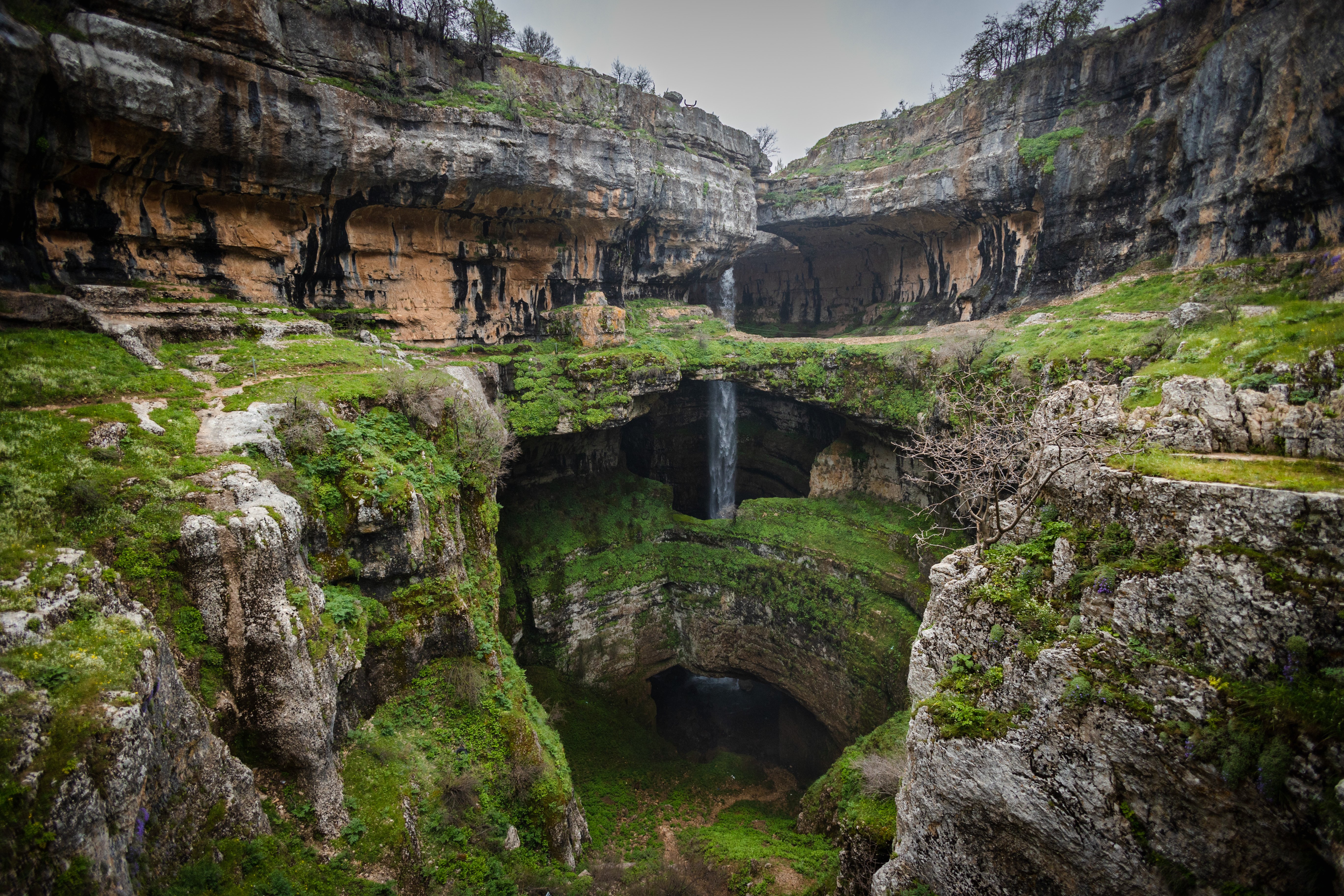 Baatara Gorge — known to most Lebanese as Balou3 Bal3a, or بالوع بلعا — feels like another world. (Credit: Lea El Medawar)
Baatara Gorge — known to most Lebanese as Balou3 Bal3a, or بالوع بلعا — feels like another world. (Credit: Lea El Medawar)
Avaatara has only been successfully climbed once before, by the late Austrian professional climber David Lama in 2015. Lama, then 25, had almost a decade’s worth of experience more than Victor.
"I guess when it comes to climbs that are just this hard or that are this close to your limit, climbing is almost more of an art than a sport," Lama said at the time.
Two years ago, Victor watched the video of Lama’s ascent and immediately knew he needed to climb the same route. Now, he’s in Lebanon to put up Avaatara’s second-ever ascent.
If you squint just to the right of the waterfall, you can see metal clips hanging from the rock. These clips — spaced out vertically every few meters — mark the route. They are where Victor will place his rope to protect against falls.
Hervé belays his son from below, meaning he will catch Victor in the event of a fall. Both climber and belayer wear a harness, and Hervé is tied to a bolt in the cliffside as an extra precaution. If Victor falls, Hervé uses a belay device to halt his son’s descent.
The route itself is perhaps 35 meters tall, but the drop to the bottom of the sinkhole is an intimidating 255 meters.
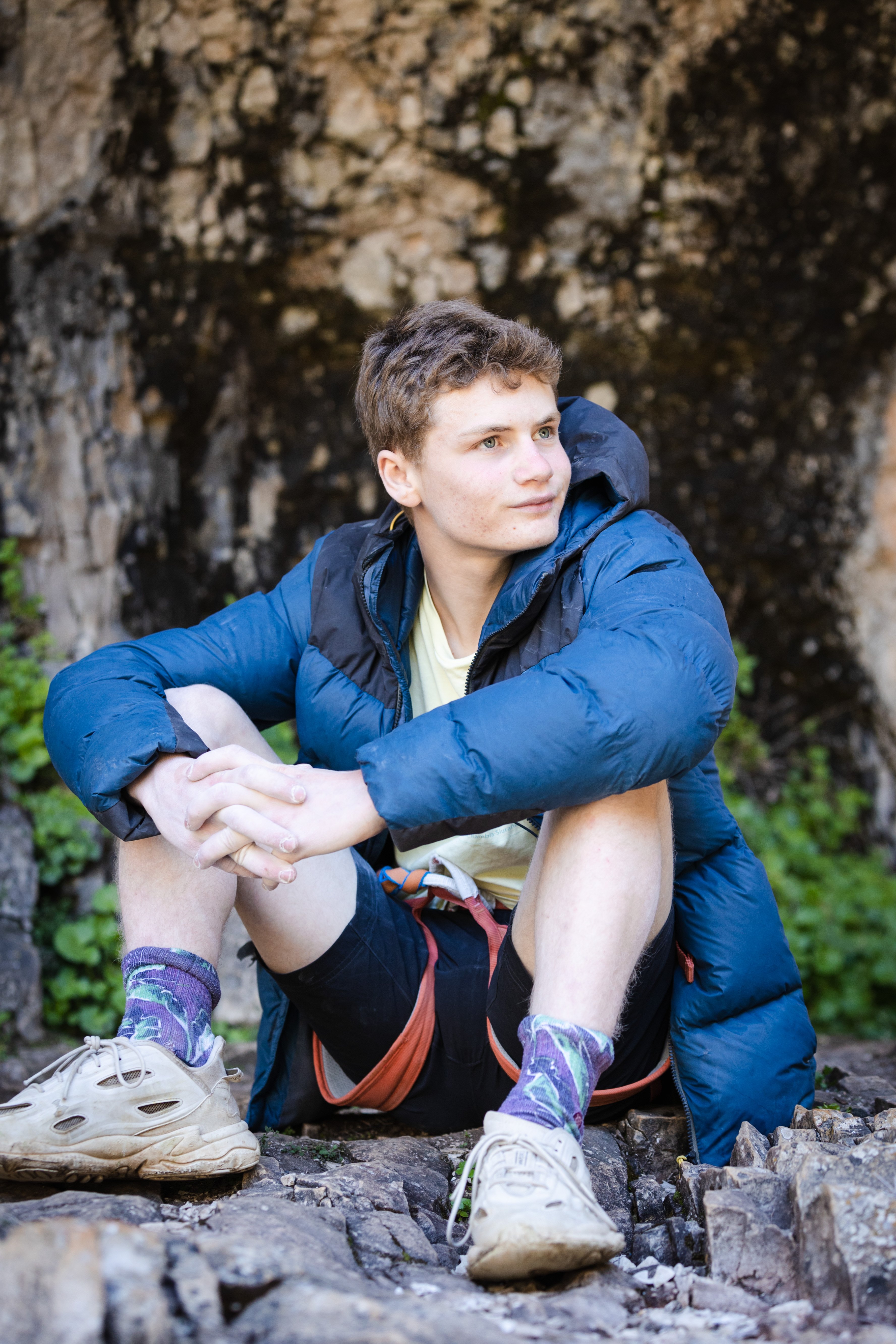 Victor Guillermin, a 17-year-old French competition climber, and his father traveled to Lebanon specifically to climb Avaatara. (Credit: Lea El Medawar)
Victor Guillermin, a 17-year-old French competition climber, and his father traveled to Lebanon specifically to climb Avaatara. (Credit: Lea El Medawar)
Climbing a king line
The physical challenge of Avaatara is tricky for non-climbers to fathom.
All rock climbing routes are rated numerically according to difficulty. The higher the number, the more difficult the climb. Routes graded 7a+ to 7c+ are generally considered to be professional-level climbing. Routes 8a and above are considered elite.
Avaatara is the Arab world’s only 9a climb, and the first in the Middle East. Ranked even beyond “elite,” only a small number of people in the world can climb at this level.
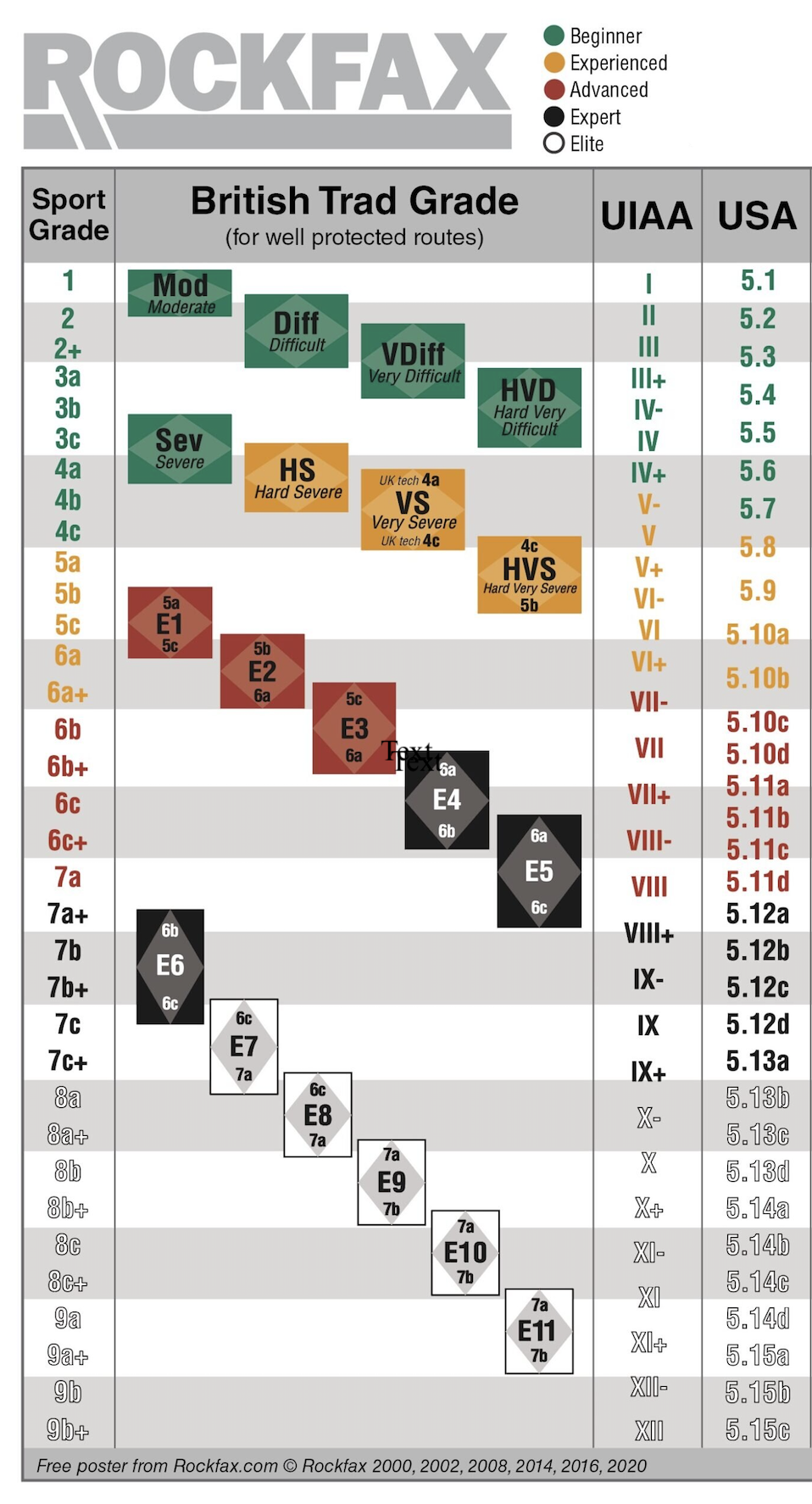 Sport climbing grades, according to difficulty. (Credit: Rockfax, 2020)
Sport climbing grades, according to difficulty. (Credit: Rockfax, 2020)
So how do climbers tackle a route of this magnitude?
Each route is a puzzle. Climbers first need to figure out the route’s “beta”: the correct sequence of moves that allows climbers to successfully ascend the route.
Much like finding their way through a maze, climbers must determine the exact way to position themselves to maintain enough body tension to remain on the wall. Each move unlocks the next. It’s as much a mental challenge as a physical one, and it’s why so many climbers fall in love with the sport.
Victor began by learning Avaatara’s beta. He’d hang on the rope and climb small sections of the route a few meters at a time. He tells L’Orient Today that he relied heavily on footage of David Lama’s ascent, which offered valuable beta clues.
Even the “easy” 7c section at the beginning required practice. Victor needed to maximize the efficiency of his movements to save energy for the rooftop section of the climb.
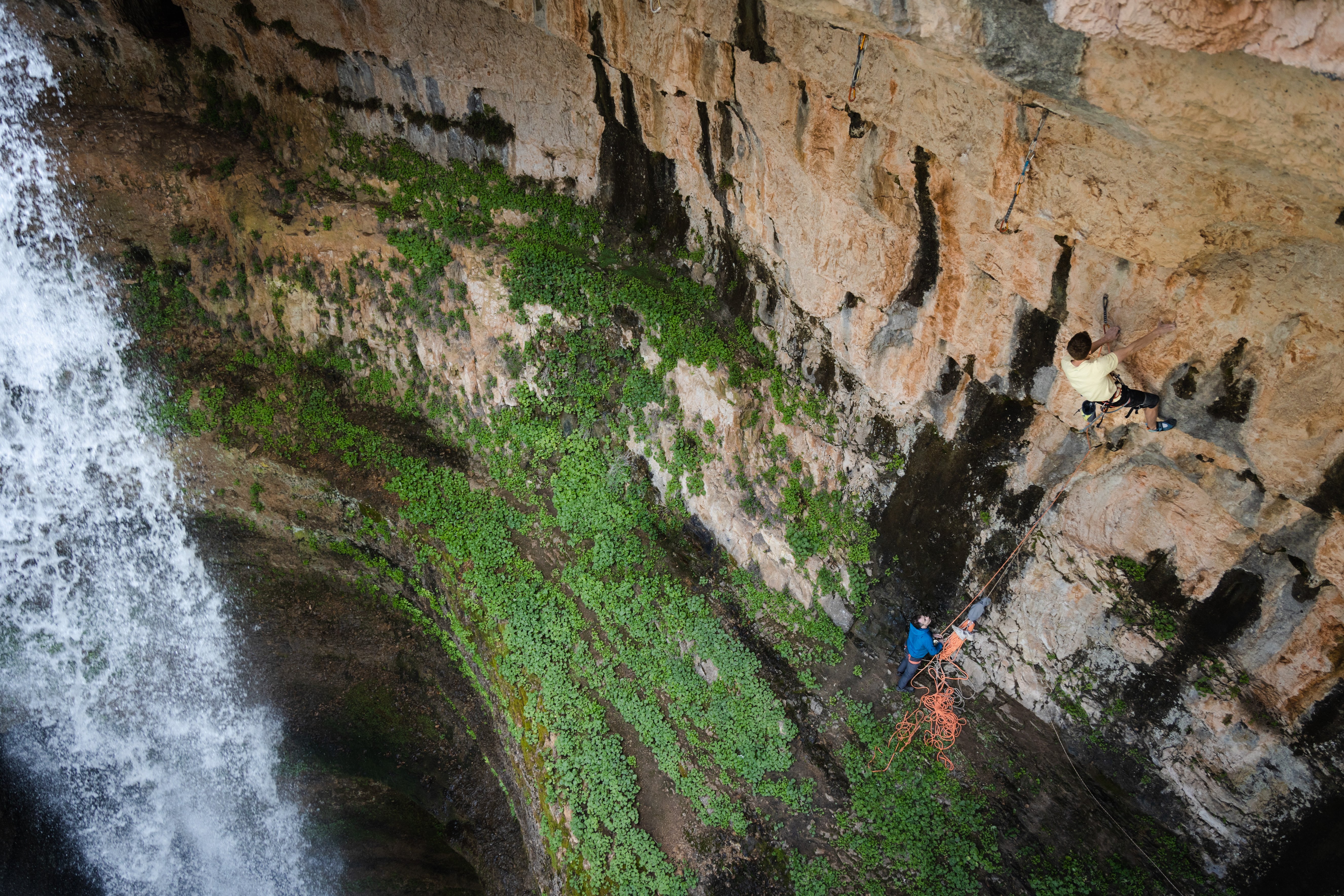 Avaatara has only been successfully climbed once before, by the late Austrian professional climber David Lama in 2015. (Credit: Lea El Medawar)
Avaatara has only been successfully climbed once before, by the late Austrian professional climber David Lama in 2015. (Credit: Lea El Medawar)
“Wind is a problem,” adds Hervé. “When the wind is high, it kicks water onto the rock.”
Standing on the natural bridge facing the route, spectators can see columns of mist swirling off the waterfall and onto the rock. It’s not immediately clear how Victor keeps from slipping off.
“Do you ever get scared?” a spectator asks Victor after one of his tries.
“No, it’s okay,” he replies with a smile.
An unexpected discovery
Avaatara isn’t Victor’s first 9a climb.
He “sent” — climber slang for “successfully completed” — two other routes of equal difficulty in France and northern Spain. But Lebanon is different, he says.
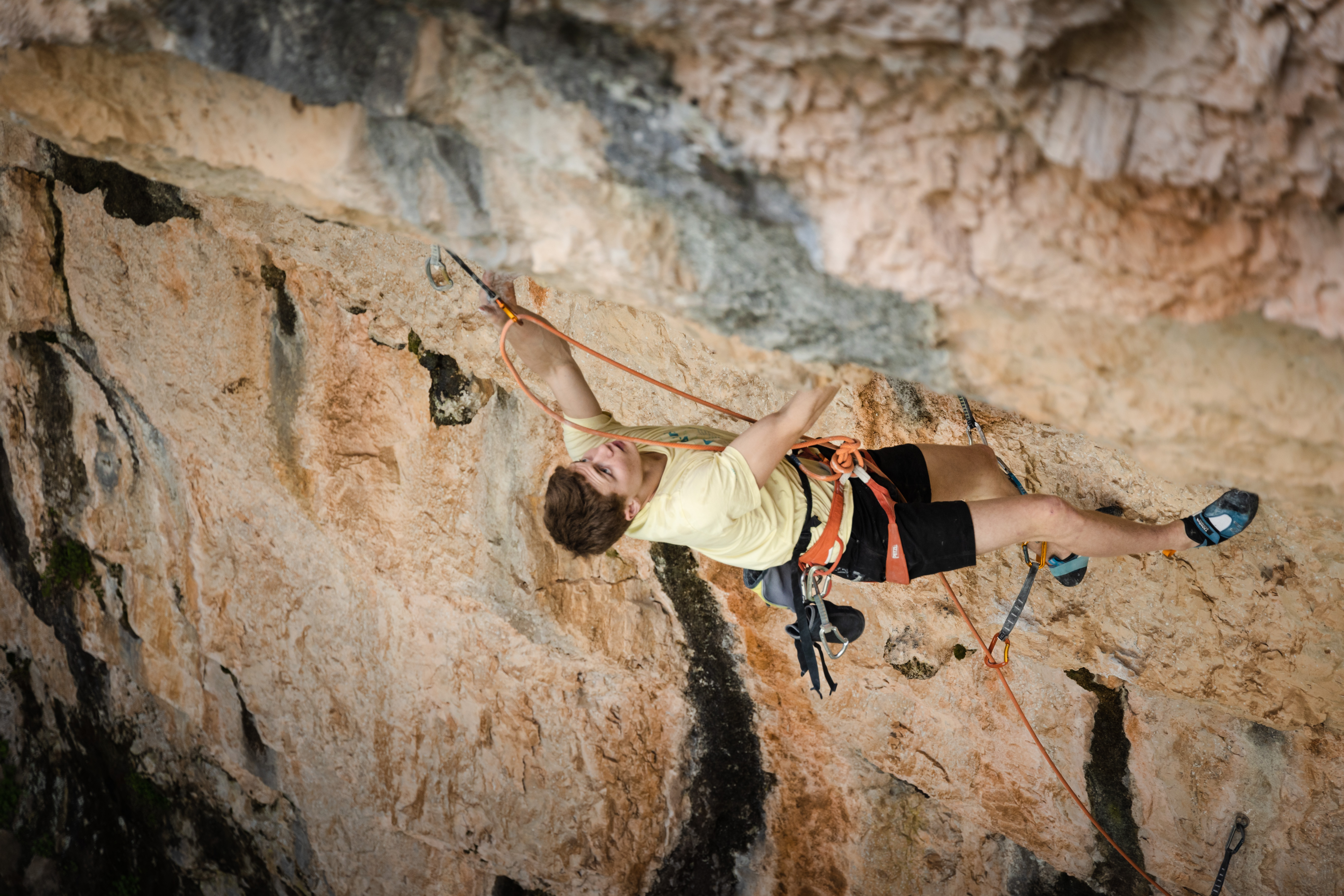 Though it may seem counterintuitive, rooftop climbs — or routes where the climber’s back is to the ground — are often safest to fall on. With nothing below the climber, there is minimal risk of a contact fall. (Credit: Lea El Medawar)
Though it may seem counterintuitive, rooftop climbs — or routes where the climber’s back is to the ground — are often safest to fall on. With nothing below the climber, there is minimal risk of a contact fall. (Credit: Lea El Medawar)
For one, it’s the first time he’s been able to connect with a local community of climbers. Victor and Hervé own a camper van back home in Normandy, which they use to drive to different mountains without much outside interaction.
“When we were climbing in France or Spain, we were only two. We shared this process of working a route … and we were only focused on the send,” says Victor. “Now, with this trip to Lebanon, we’ve discovered this community. I think the Lebanese community of climbers, especially, is just awesome.”
To help plan their trip to Lebanon, they got in touch with local climber Jad El Khoury.
Jad quite literally co-wrote the book on rock climbing in Lebanon. He developed many of the routes and recently co-founded Rock Climbing Lebanon and Sit Start, an organization working to popularize bouldering in the country.
He also belayed David Lama during his first ascent of Avaatara and still has the rope the Austrian used to climb it.
Now, Jad is in Baatara to cheer Victor on.
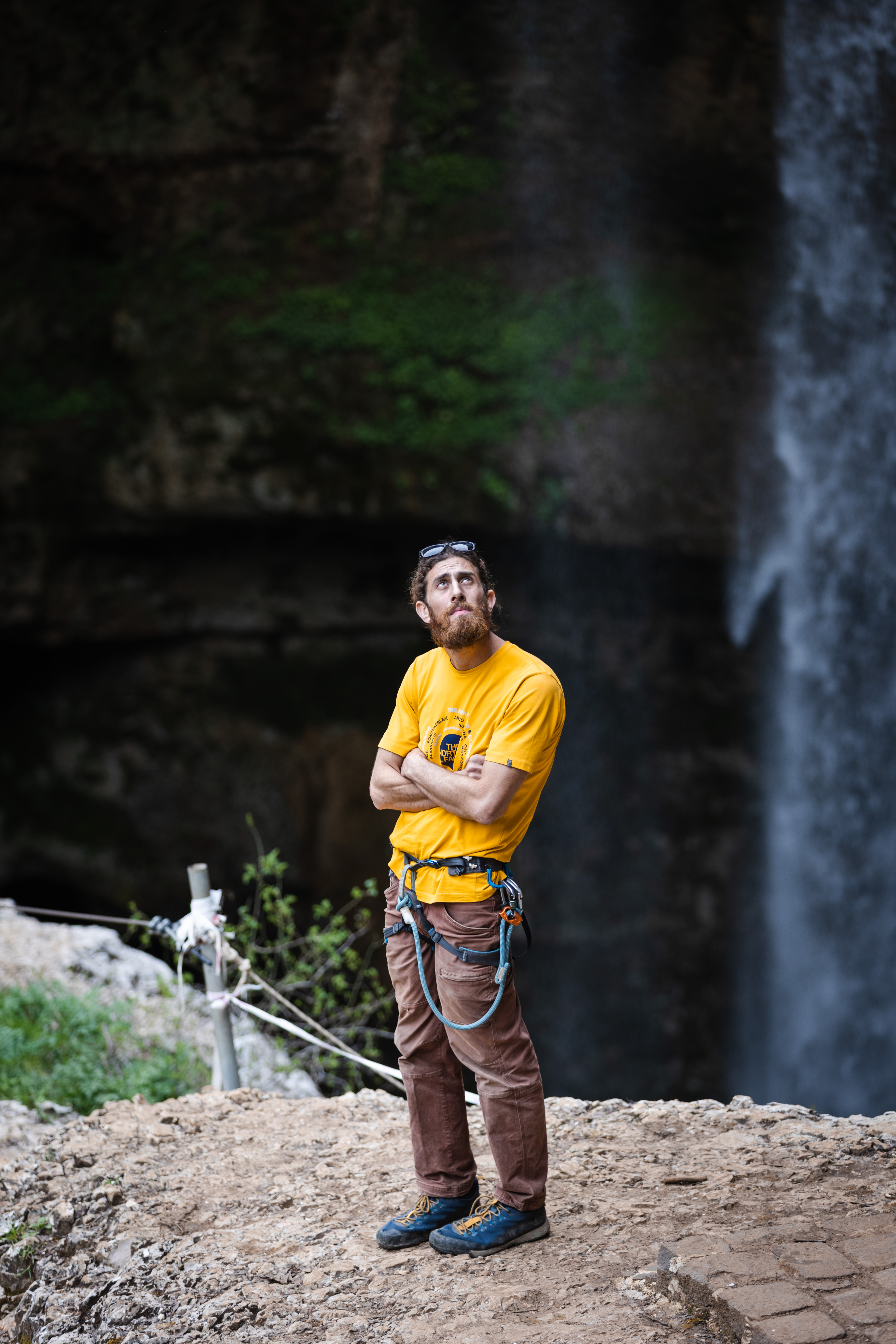 Jad quite literally co-wrote the book on rock climbing in Lebanon. He developed many of the country's routes and also belayed David Lama during his first ascent of Avaatara. (Credit: Lea El Medawar)
Jad quite literally co-wrote the book on rock climbing in Lebanon. He developed many of the country's routes and also belayed David Lama during his first ascent of Avaatara. (Credit: Lea El Medawar)
“It’s really unbelievable for a 17-year-old climber,” says Jad. “This is the start of his career. And to have a supportive father is priceless.”
Victor and Hervé say they were intent on picking a destination where they could contribute to the climbing scene. They brought 20 pairs of new climbing shoes to donate to the local community, which Jad will ensure are made available for rent at Tannourine El Tahta — Lebanon’s biggest outdoor climbing destination.
During this week, a handful of local climbers even drove to Baatara Gorge to watch Victor attempt history.
“The climbers [in Lebanon] are always smiling. That’s crazy! You’ll never see a climber not smiling,” says Victor. “They know that their country isn’t perfect, but they just enjoy climbing here so much and are so proud of it. That’s super cool to see.”
Full tries
By Saturday, April 22, Victor is giving Avaatara full tries; that is, attempting the route from start to finish in one go. The work he’s put in is evident. His movements are fluid; it looks like he’s swimming up the rock.
Avaatara offers only one reprieve: a rest just below the roof. Here, Victor wedges his left leg into a narrow slot in the rock. Relying only on the lateral pressure exerted by extending his knee and foot in opposite directions, he manages to stay on the wall.
He lets go with his hands. Held in place by his left leg, Victor leans all the way back until he’s fully inverted. He shakes out his arms and enjoys the rest. He’ll need every ounce of strength for the crux: the most challenging section of the climb.
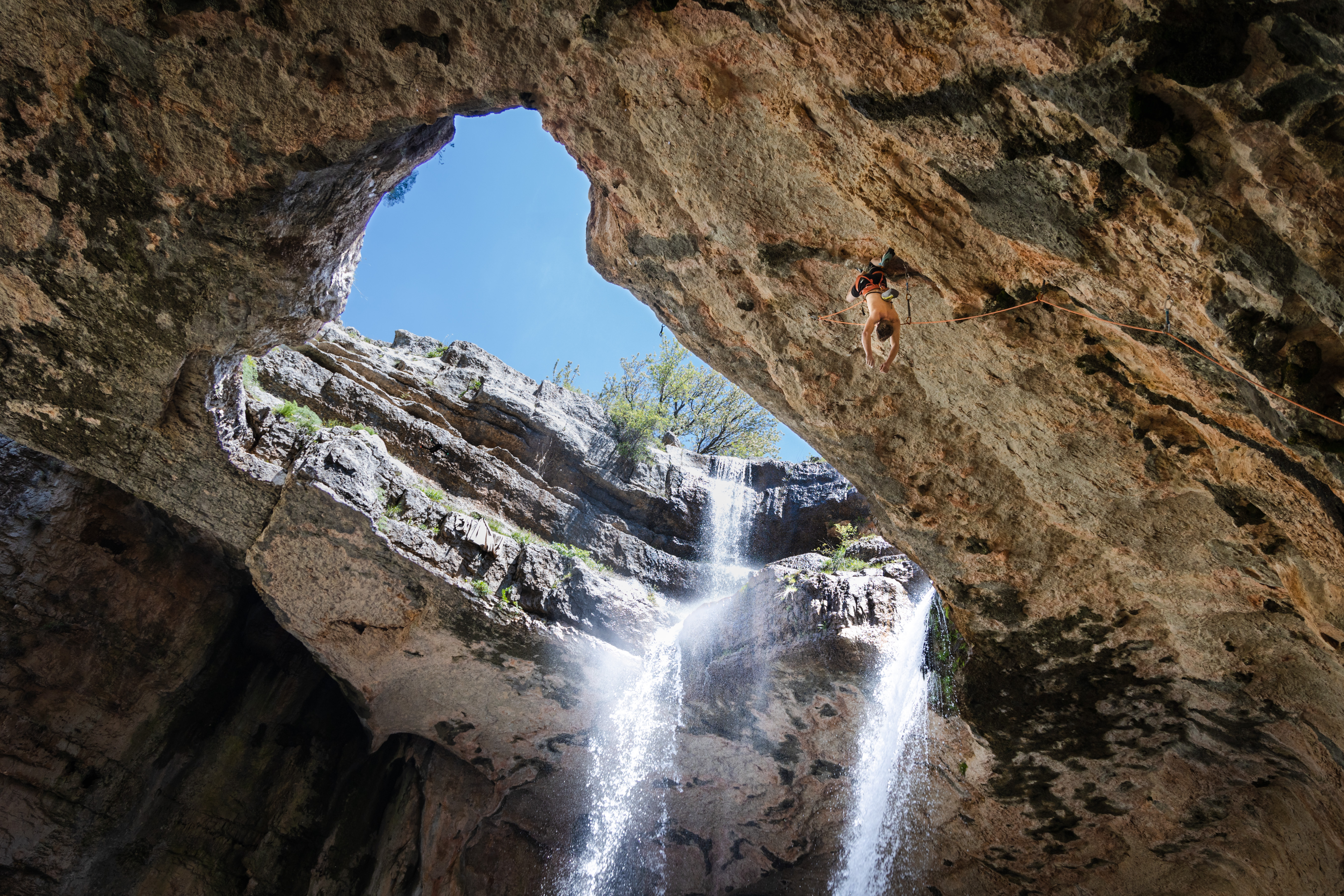 Avaatara offers only one reprieve: a kneebar rest just below the roof. Relying only on the lateral pressure exerted by extending his knee and foot in opposite directions, Victor manages to stay on the wall. (Credit: Lea El Medawar)
Avaatara offers only one reprieve: a kneebar rest just below the roof. Relying only on the lateral pressure exerted by extending his knee and foot in opposite directions, Victor manages to stay on the wall. (Credit: Lea El Medawar)
A crux typically consists of a handful of skillful moves, but Avaatara’s crux is a precise sequence of no less than 15 highly technical strength moves that require both perfect positioning and fearless commitment.
After 30 seconds or so, Victor draws a deep breath and pulls himself out of the kneebar rest.
He hooks his right heel into a nearby flake of rock. Left hand crimps onto a minuscule hold, right hand reaches across his chest to a small pitch. Right foot transitions from a heel hook to a toe hook. Left hand finds a three-finger pocket, only to immediately shoot for the next crimp.
He’s in the middle of the crux.
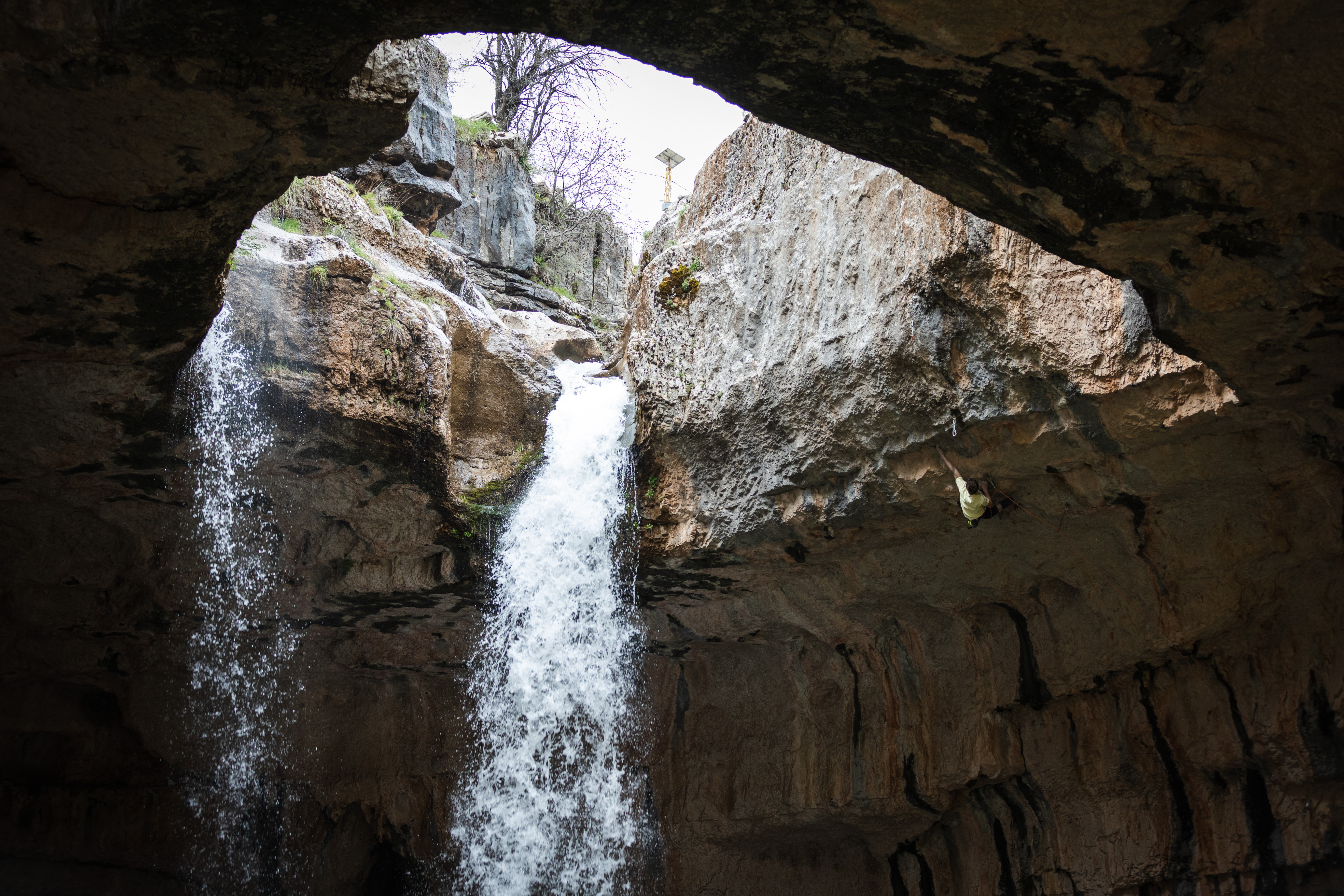 Victor Guillermin, 17, pushes through the crux of Avaatara. (Credit: Lea El Medawar)
Victor Guillermin, 17, pushes through the crux of Avaatara. (Credit: Lea El Medawar)
Though it may seem counterintuitive, rooftop climbs — or routes where the climber’s back is to the ground — are often safest to fall on. With nothing below the climber, there is minimal risk of a contact fall. In other words, they can’t possibly hit anything on the way down.
This is why Victor is comfortable skipping clips on the roof. Clipping the rope requires climbers to take their hand off the wall, momentarily relying on three points of contact instead of four. But on the crux of Avaatara, that’s simply not possible.
One of the clips requires Victor to angle his hips against the wall, costing him precious energy and time. By skipping that clip, he can conserve energy — perhaps just enough to reach the hold he needs.
On this try, Victor ignores the clip. With his back to the ground, his left hand finds the crimp — just enough space for the pads of his fingertips – and his right hand finds a flat hold. He holds his arms at 90 degrees and pulls hard, compressing his chest and allowing his feet to come off the wall — known as “cutting feet.”
He’s now over 200 meters in the air doing a pullup on his fingertips.
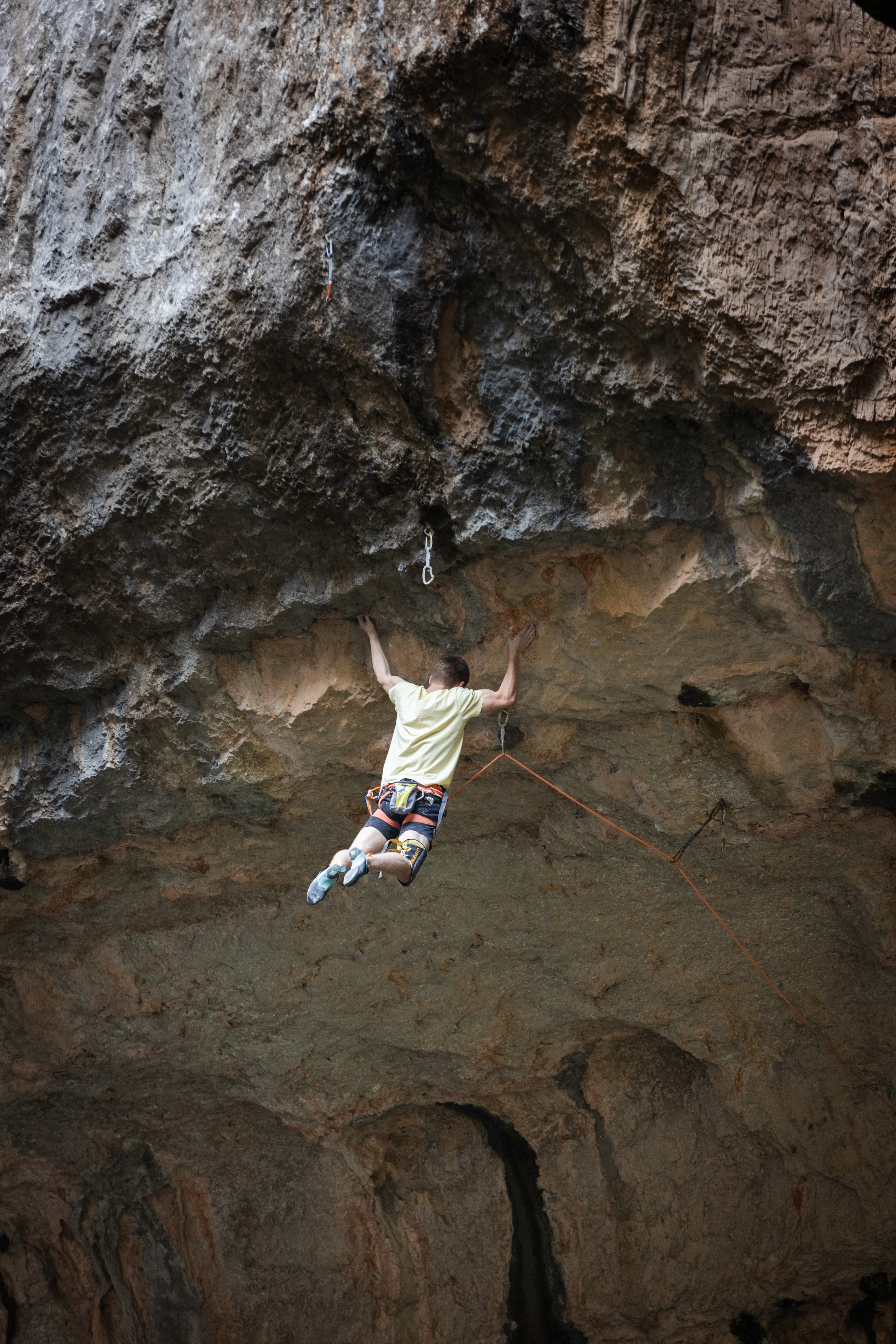 Victor holds his arms at 90 degrees and pulls hard, compressing his chest and allowing his feet to come off the wall — known as “cutting feet.”(Credit: Lea El Medawar)
Victor holds his arms at 90 degrees and pulls hard, compressing his chest and allowing his feet to come off the wall — known as “cutting feet.”(Credit: Lea El Medawar)
“Allez, allez, allez!” shouts Jad, who watches from the bridge below. The crowd draws a breath.
Victor resets his feet on the wall as quickly as possible, now in a better position to drop his knee and shoot for the high left hand. But something is off. His team sees him squirm his feet. He’s struggling to find a position he trusts.
It’s only a moment of delay, but it’s enough. As he reaches for the far hold, his strength fails him and a scream of French profanity cuts through the roar of the water as he falls.
“It’s hard for him to stay motivated sometimes. To believe that he can do it,” says Hervé, eyeing his son as Victor changes out of his climbing shoes to take a long break.
Avaatara requires so much effort that the young athlete only has enough strength for four or five tries each day.
“My beta is good,” adds Victor between tries. “I just need to be stronger.”
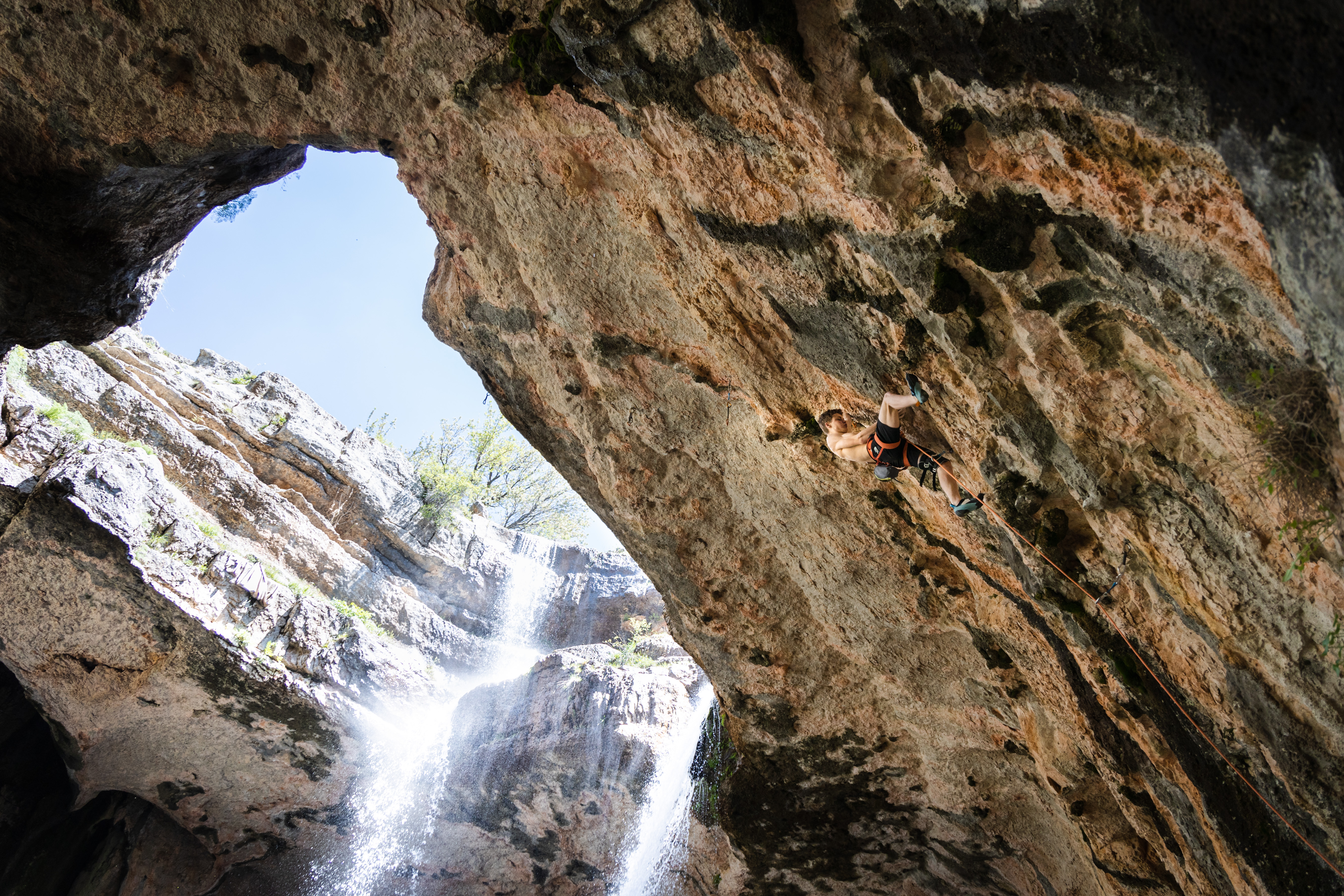 A “king line” is a term coined by American professional climber Chris Sharma to describe the perfect formulation between difficulty and beauty. (Credit: Lea El Medawar)
A “king line” is a term coined by American professional climber Chris Sharma to describe the perfect formulation between difficulty and beauty. (Credit: Lea El Medawar)
Last day, last try
Friday, April 28, is Victor’s last day of climbing. He still hasn’t sent Avaatara and, as soon as he finishes his warmup, it starts raining.
The rain humifies the air and dampens the holds. On his first try, Victor falls off the toe hook on the upper crux. He’s frustrated, but takes a long break until he’s ready to try again. Then it starts hailing.
“Super unlucky,” says Victor. “I already felt so tired, because of the day before and all the pressure. The pressure consumes a lot of energy.”
On his third try, he falls at the same toe hook.
“I start getting, not angry, but a bit desperate. I was so close to sending [it], but I couldn’t do it. I felt I had the energy for just one more try,” says Victor.
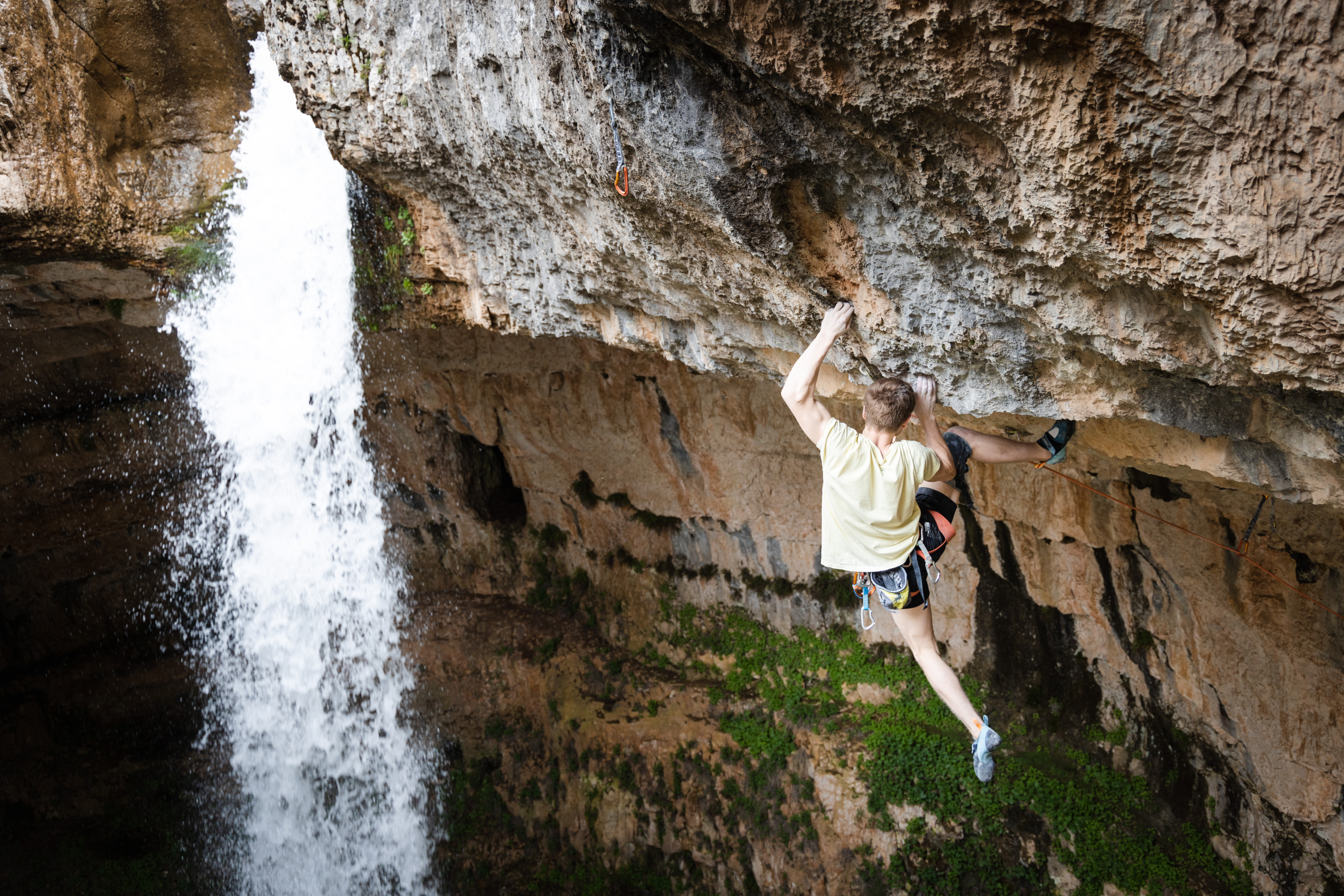 Avaatara requires so much effort, the young athlete has enough strength for only four or five tries each day. (Credit: Lea El Medawar)
Avaatara requires so much effort, the young athlete has enough strength for only four or five tries each day. (Credit: Lea El Medawar)
He breaks for more than an hour. During that time, the sun returns and dries the wall a bit. Allowing himself a taste of optimism, Victor puts his shoes back on and tries for the last time.
This time, his toe sticks. He pushes through the crux and emerges from the rooftop section of the route. In a matter of minutes, he’s at the top.
Another scream cuts through the air, this time in triumph.
“I don’t know how, but I got the hold,” Victor recounts with an audible smile. “I had two meters to go to the jug [large hold] and my fingers were frozen. So I made a huge fight, maybe the biggest fight of my life.”
At 17 years old, Victor became the only living climber in the world to send Avaatara. On the last day, on his last try.
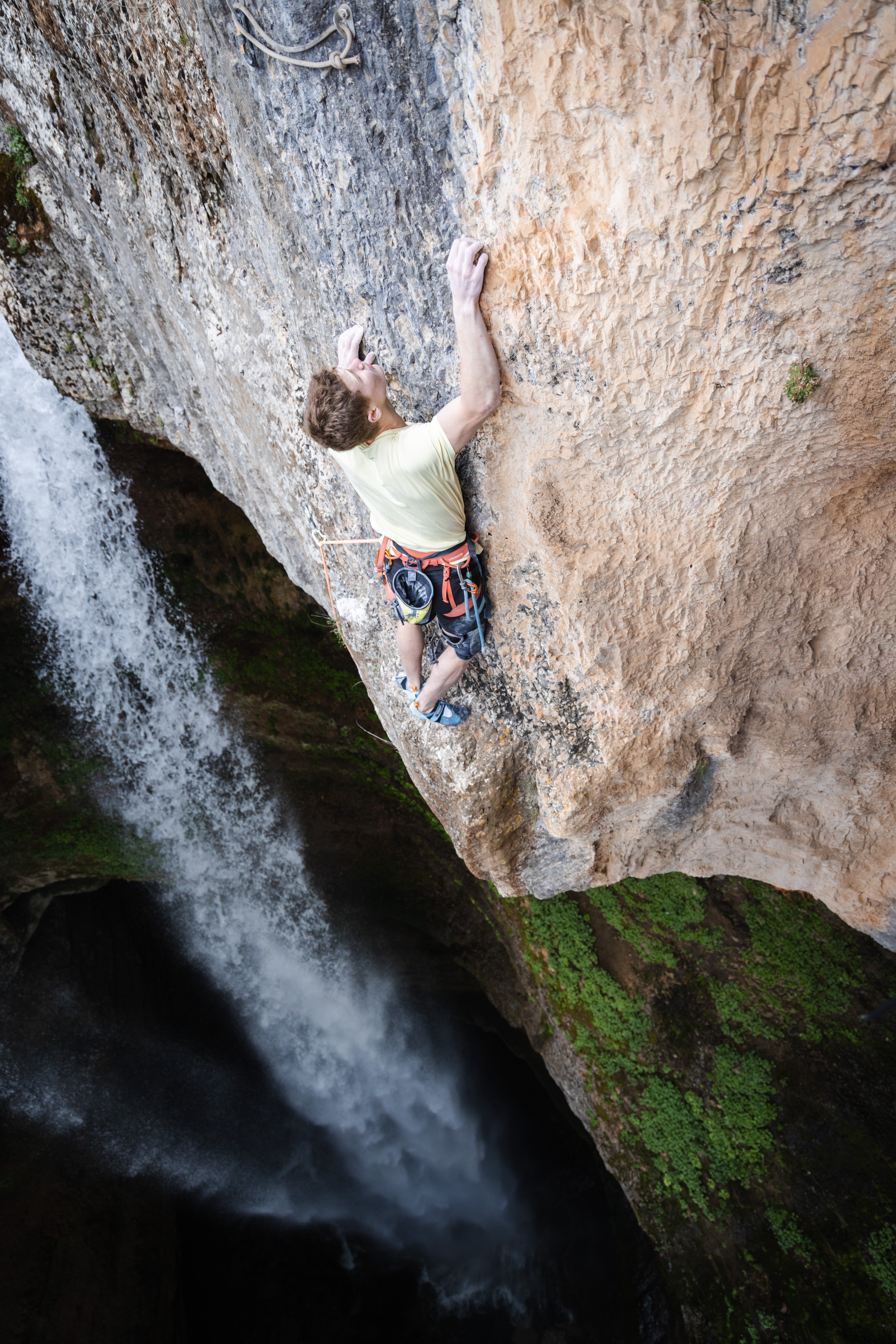 At 17 years old, Victor became the only living climber in the world to send Avaatara. On the last day, on his last try. (Credit: Lea El Medawar)
At 17 years old, Victor became the only living climber in the world to send Avaatara. On the last day, on his last try. (Credit: Lea El Medawar)
“I felt emotional because it’s a special route — it’s David Lama’s route. It was a way for me to pay tribute to David Lama and honor his memory,” says Victor. “I will never forget this route and this adventure in Lebanon with such amazing people.
Victor and Hervé are already checking their schedules to see when they can return to Lebanon. Driving down from Baatara Gorge, they eye the surrounding cliffs.
“The potential here is just crazy … It’s like a new El Dorado,” says Victor.
“With just a little bit more development, Lebanon will become one of the most popular spots in the world for climbing. It deserves it.”